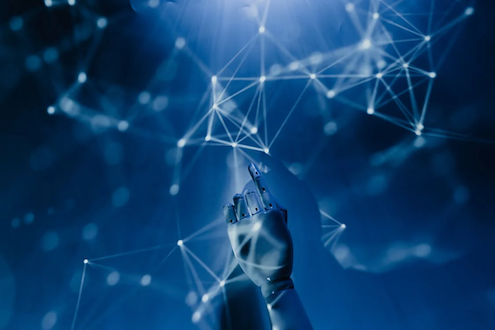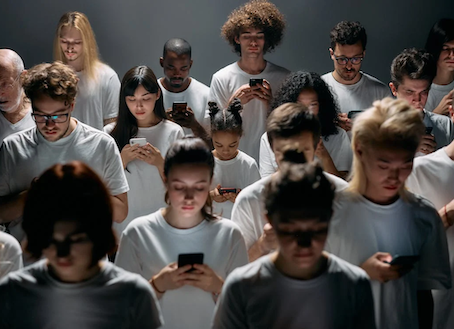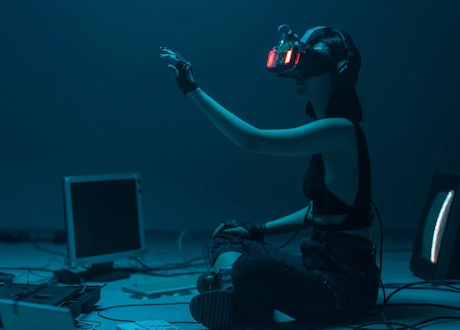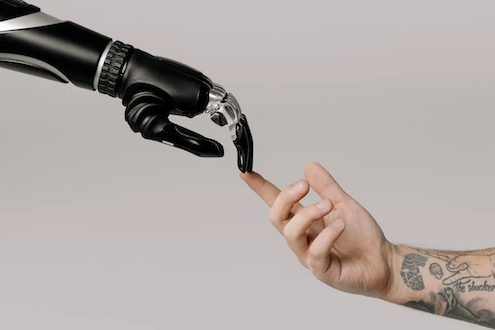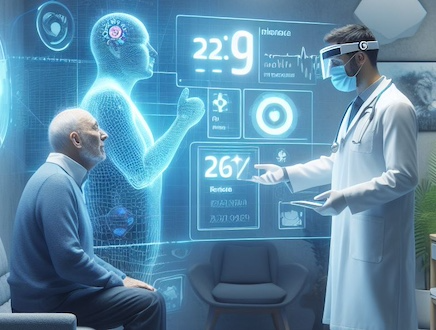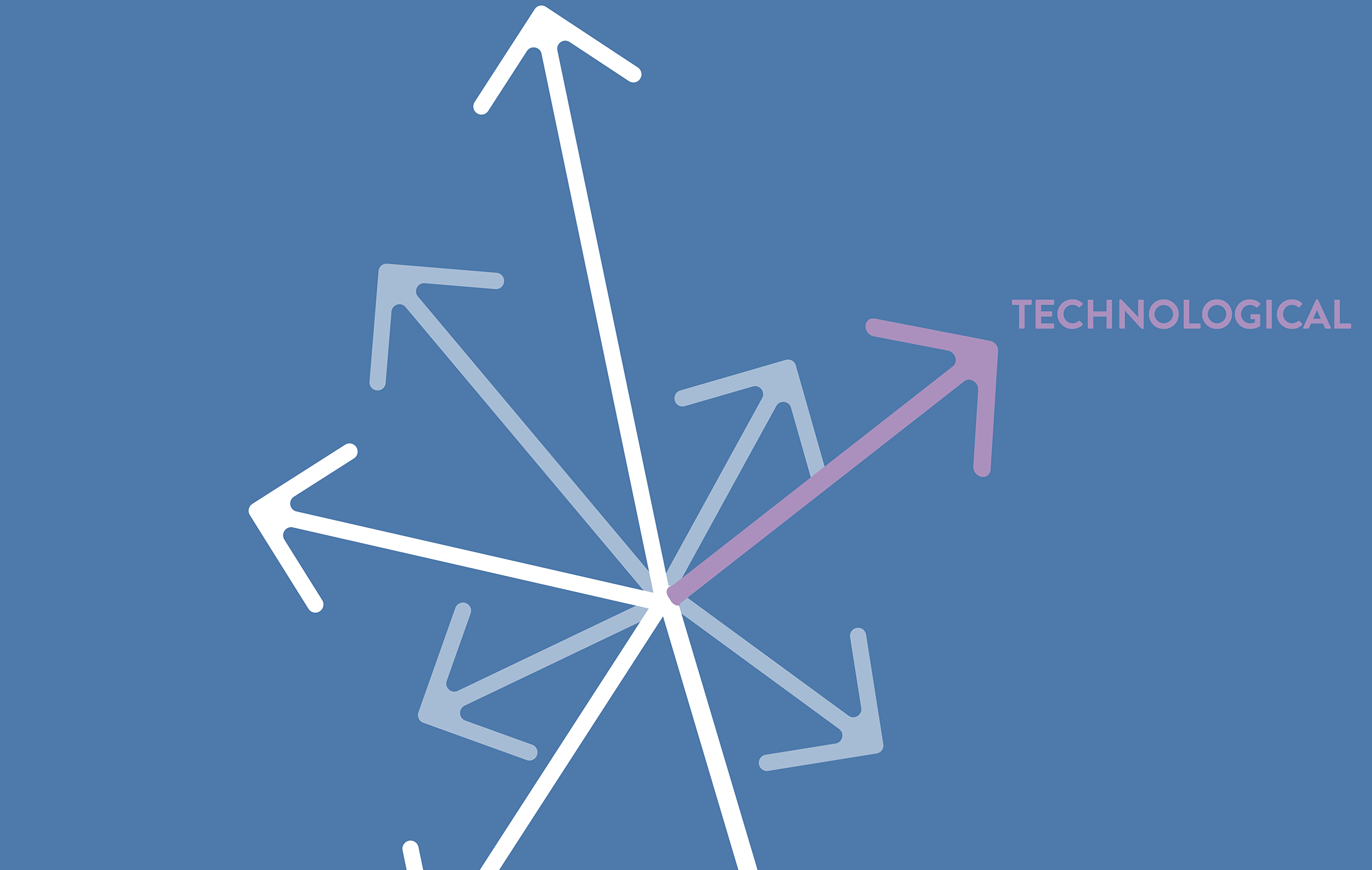
Med(AI)cine
Where will artificial intelligence arrive?
Artificial intelligence (AI) is the ability of a digital computer or computer-controlled robot to perform tasks commonly associated with intelligent beings. The term is frequently applied to the project of developing systems endowed with the intellectual processes characteristic of humans, such as the ability to reason, discover meaning, generalize, or learn from past experiences.
It is also defined as a technology that enables the world of the metaverse to work following the rules defined by the creator. It is about representations that support the making of models to facilitate an understanding of thinking, perception, and action.
What do we know?
Deep learning is a very important and crucial component of artificial intelligence which includes statistical data and predictive learning. It is a subdivision of machine learning which uses neural networks to simulate the behavior of the human brain. The neural networks are stimulated by the function of the human brain and they are made up of large amounts of data that works in an unsupervised or semi-supervised manner.
What do we not know?
The most obvious change that many people will feel across society is an increase in the time of engagements with large institutions. Any organization that engages regularly with large numbers of users - businesses, government units, nonprofits will be compelled to implement AI in the decision-making processes and in their public- and consumer-facing activities.
AI will allow these organizations to make most of the decisions much more quickly. As a resultwe will all feel life speeding up. AI will have a big impact on several fields such as education,healthcare, finance, law and transportation, even if we do not yet know the consequences of this revolution.
Inspiring Examples
OpenAI recently announced an update to ChatGPT (available for both Apple and Android) that adds two features to the popular chatbot: voice options based on artificial intelligence that allow the system to respond "by voice" to your requests and a new ability to analyze images, the latter similar to the one already available for free with the chatbot Bard Google.
The Technical University of Munich (TUM), the Munich School of Philosophy (HFPH) and the University of Augsburg (UNIA) are pooling their expertise in engineering, ethics, philosophy and the social sciences in a joint Center for Responsible AI Technologies.
References
- https://www.sciencedirect.com/science/article/pii/S2666920X22000376/
- https://blog.osservatori.net/it_it/intelligenza-artificiale-funzionamento-applicazioni
- https://ocw.mit.edu/courses/6-034-artificial-intelligence-fall-2010/resources/lecture-1-introduction-and-scope/
- https://www.complexityeducation.com/2021/06/25/domande-senza-risposta-sullintelligenza-artificiale/
Autonomous Systems
What can we do by ourselves?
Autonomous systems are systems that can make their own decisions about what to do next. This is possible because they are part of an ecosystem of things (including spaces, places, machines, and devices) connected and seamlessly engaging in the background to improve our lives.
Autonomous systems can be vehicles, logistics systems, building systems - any system that benefits from making decisions without human intervention in new ways and that change over relatively short periods of time.
What do we know?
Autonomous systems in healthcare are primarily robots (including autonomous implanted devices operating on sophisticated algorithms fed by local sensors data). However there is a growing interest in soft robots (software systems) that can provide health care assistance. Artificial Intelligence is a growing component in autonomous systems for the healthcare domain expected to lead a global market value of 34 billion $ by 2025 (2 billion $ in 2018). Autonomous robots in healthcare can be segmented in assistive, rehabilitation, humanoid, delivery, implanted, surveillance and security (these latter obviously apply to other sectors as well).
What do we not know?
Autonomous systens - those which are able to take action with little or no human supervision-are believed to hold huge promise for transforming health and care systems, improving patient outcomes, reducing costs and enabling new medical discoveries.
Despite their very wide range of potential applications, and high levels of development activity, these technologies are as yet little used in health and care settings, and early applications are likely to embody the simplest of these technologies. This situation presents policymakers with both questions and opportunities - questions around whether the adoption of these technologies is being imposed by barriers, and opportunities to fully consider, while there is time to do so, the potential risks or drawbacks associated with their application.
Inspiring Examples
Cardiopulmonary monitoring is of critical importance in a variety of clinical and non-clinical applications ranging from monitoring physiological conditions of crew members during space missions to emotion and stress recognition in applications involving human-machine interaction.
Hyper-connected
Will our doctor be here with a touch?
Digital technologies are now integral to daily life, and the world's population has never been more interconnected. Innovation, particularly in the digital sphere, is happening at unprecedented scale.
Even so, its application to improve the health of populations remains largely untapped, and there is immense scope for use of digital health solutions.
What do we know?
Hyperconnectivity is expanding fast: more than 4 billion people around the world are using the internet; over 5 billion inhabitants now have a mobile phone (68%penetration); there are 3.2 billion active social media users worldwide—growing at an average of 11 new users per second in 2017.
The IoT is considered one of the enablers of a hyperconnected society. IoT is an infrastructure connecting the physical and the digital worlds. The IoT could grow from about 9 billion connected devices in 2017 to some 20-30 billion by 2020 and more than 55 billion IoT devices by 2025. In aggregate, investment in IoT will be close to $15 trillion between 2017 and 2025.
What do we not know?
Much has been written about the advent of 5G in recent years. Press coverage has tended to focus on deployment of the technologies that will enable the new high-speed network, or on which companies are racing to win contracts in key areas of coverage. While these aspects are important, less thought has been devoted to what the world looks like after 5G is successfully deployed around the world.
What exactly does the hyperconnected world of 2030-2040 look like? Is the hyperconnected world a future in which 5G networks have been widely and globally deployed, and in which the normal, day-to-day functioning of society depends on billions of connected devices having highly reliable, low-latency connectivity?
Inspiring Examples
It's more than 50 years since car manufacturers first built computers into their vehicles. Those basic chips helped control the amount of fuel injected into the engine to keep it running smoothly. Similar digital controls are still used today, but computing power and functions in cars have both accelerated to the point where the automotive industry is expected to be among the top four industries for 5G internet enabled service provider opportunities by 2030.
Remote, real-time patient monitoring though wrist monitors that are connected to doctors and machines and applications are allowing real-time reactions and ultimately, saving lives.
References
- https://knowledge4policy.ec.europa.eu/foresight/topic/accelerating-technological-change-hyperconnectivity/hyperconnectivity-iot-digitalisation_en
- https://legacy.iftf.org/hyperconnectedworld/#:~:text=The%20Hyperconnected%20World%20of%202030%E2%80%932040&text=Simply%20put%2C%20this%20world%20means,possible%20with%204G%20LTE%20networks
- https://www.who.int/health-topics/digital-health#tab=tab_1
Human Enhancement
Will we become limitless?
The term "human enhancement" refers to any kind of genetic, biomedical, or pharmaceutical intervention aimed at improving human dispositions, capacities, and well-being, even when there is no pathology to be treated.
Some talk about what might be called "humanity plus" - people who are still recognizably human, but much smarter, stronger and healthier. Others speak of "post-humanity," and predict that dramatic advances in genetic engineering and machine technology may ultimately allow people to become conscious machines - not recognizably human, at least on the outside.
What do we know?
The term "human enhancement" encompasses a range of approaches that may be used to improve aspects of human function (for example memory, hearing, mobility). This may either be for the purpose of restoring an impaired function to previous or average levels, or to raise function to a level considered to be "beyond the norm" for humans. This is often achieved through technological means, with examples including the following: the use of cognitive enhancing drugs to improve memory and concentration; the use of hearing aids and retinal implants to improve sensory perception; the use of bionic limbs to restore mobility.
What do we not know?
Implications will be complex and there will be multiple political and social tensions. There are many instances where the possible implications of enhancement at work will be complex and potentially divisive. Enhancement could benefit employee efficiency and even work-life balance, but there is a risk that it will be seen as a solution to increasingly challenging working conditions, which could have implications for employee wellbeing. For example, enabling an ageing workforce to delay retirement would have implications for youth employment.
Inspiring Examples
Visual prostheses for the blind are potentially even more life-changing. After many decades of development, devices are now available that wirelessly connect a chip in the eye to an external video camera and processing system. For people who suffer from retinitis pigmentosa, which causes the light-sensitive retina cells in the eye to gradually die, these devices transfer visual information to the remaining retina cells using electrical stimulation.
Building upon insights from psychology and neuroscience, the Fluid Interfaces group of MIT creates systems and experiences for support of functions such as motivation, attention, memory, learning, creativity, critical thinking, communication, empathy, and emotion regulation.
References
- https://bmcmedethics.biomedcentral.com/articles/10.1186/s12910-017-0215-8
- https://www.pewresearch.org/science/2016/07/26/human-enhancement-the-scientific-and-ethical-dimensions-of-striving-for-perfection/
- https://www.media.mit.edu/research/?filter=everything&tag=human-augmentation
- https://www.thebritishacademy.ac.uk/documents/264/Human-enhancement-the-future-of-work.pdf
Extended Reality
Blind or visionary?
AR (Augmented Reality) employs digital, visual, audio, and sensory elements to enhance the appearance of something in the physical world and provide real-life interaction. VR (Virtual Reality) is the use of computers to create interactive 3-dimensional (3D) environments. MR (Mixed Reality) merges the real and virtual world to create unique experiences where digital and real objects coexist. XR (Extended Reality) is the combination of all environments, real or digital, man-made, natural, or computer-generated.
What do we know?
It leverages a combination of technologies to enhance human perceptions of reality, blurring the boundaries between the real and digital environments. XR technologies can be used for a range of experiences, from recreation to training simulations, online meetings, healthcare, and architectural design. In its various forms, extended reality has the potential to disrupt the digital landscape, transform how we communicate and engage with information, and change the way various industries operate. Imagination is infinite, and by creatively combining XR technology with our imagination, new frontiers will open up. Several XR applications already have huge social relevance and impact, for example in the fields of education, entertainment, healthcare, food, engineering, e-commerce, defense, tourism…
What do we not know?
In healthcare, there are many application areas of virtual reality, such as being used to train surgeons and doctors. Medical professors at Stanford University have stated their intention to educate their students on anatomy using VR technology, and a research team at Cambridge University is seeking to construct 3D models of tumors that can be explored in incredible detail. Can AR improve other aspects of education and life?
Inspiring Examples
Some example in healthcare. A series of several virtual reality applications is aimed at developing fine or gross motor skills, improving the mobility of the cervical spine or is taught to activate patients. For example, the software helps users to improve or at least maintain the basic cognitive functions, specifically focusing on hand-eye coordination through cognitive training in a virtual reality environment. Other applications are aimed at improving the mobility of the shoulder joint. Therapeutic relaxation rooms in a virtual reality environment are presented by the Snoezelen application. Compared to the usual form of rehabilitation, rehabilitation in a virtual reality environment uses game elements very significantly in order to increase the motivation to exercise and effectively apply pain management.
Robotics
Did humans create the machine in their own image... or more?
Robotics is a branch of engineering and computer science that involves the conception, design, manufacture and operation of robots. The objective of the robotics field is to create intelligent machines that can assist humans in a variety of ways.
Robotics can take on a number of forms. A robot might resemble a human or be in the form of a robotic application, such as robotic process automation, which simulates how humans engage with software to perform repetitive, rules-based tasks.
What do we know?
Today, industrial robots, as well as many other types of robots, are used to perform repetitive tasks. They can take the form of a robotic arm, a collaborative robot (cobot), a robotic exoskeleton or traditional humanoid robots.
Industrial robots and robot arms are used by manufacturers and warehouses, such as those owned by Amazon and Best Buy.
To function, a combination of computer programming and algorithms, a remotely controlled manipulator, actuators, control system - action, processing and perception - real-time sensors and an element of automation help inform what a robot or robotic system does.
What do we not know?
Robots will continue evolving from simple rote machines to collaborative partners with cognitive capabilities due to increased sensor technology and more notable advancements in machine learning and artificial intelligence. These advancements, expected to impact these and other related industries positively, would be extremely beneficial for robotics.
Two examples of how robots are pervasive in our daily lives are the automated factories that produce our cars and the virtual helpers that use conversational interfaces to aid us around the house. However, as we've seen, they're not yet suitable for all facets of life. But will that change in the future?
Inspiring Examples
Many repetitive and arduous tasks can be carried out by robots, which means we don't have to do them. This can increase productivity and free up time for more critical activities.
What activities in your daily life would you entrust to a robot in the future?
Domestic robots, also known as personal service robots or companion robots, are designed to help with household tasks. Domestic robots can be found in people's homes and workplaces. They perform a variety of tasks, such as cleaning, laundry, and providing care for elderly or disabled people. One example of a domestic robot is the Roomba vacuum cleaner robot. It is a small, autonomous cleaning robot that can be programmed to clean floors, carpets, and rugs.
Digital Twin
Are you ready to meet your digital version?
A digital twin is a digital representation of a physical object, person, or process, contextualized in a digital version of its environment. In the modern day of man-machine interfaces and human-AI collaboration, Digital Twins constitute a crucial piece of developing technology, as they provide ways of interacting with, understanding, and manipulating real-world objects in a completely virtual space.
Digital Twins can also be a virtual copy of the human organs, tissues, cells or micro-environment that constantly adjusts to variations in the online data and can predict the future of the corresponding counterpart.
What do we know?
Digital twins have developed rapidly in recent years, resulting from their centrality, integrity, and dynamic nature. They are integrated with other technologies and have been applied in various fields, such as smart factories in industrial production, digital modeling in the medical field, the construction of smart cities, security assurance in the aerospace field, immersive shopping in the commercial sector, and more.
What do we not know?
As digital twin technology becomes more ubiquitous, ethical and data privacy will come to the forefront. Organizations and policymakers will need to address concerns related to data ownership, privacy, and consent. Clear guidelines and regulations will be required to ensure responsible and ethical use of digital twin technology. Data anonymization, encryption, and access control mechanisms will be crucial to safeguard sensitive information and protect individuals' privacy. Striking the right balance between data utilization and privacy protection will be essential to foster public trust and drive the sustainable adoption of digital twin technology.
Inspiring Examples
The fusion of digital twins with extended reality (XR) technologies, including virtual reality (VR) and augmented reality (AR), will create immersive and interactive experiences for users. XR interfaces will provide intuitive ways to visualize and interact with digital twins, enhancing understanding, collaboration, and decision-making. Engineers, operators, and maintenance technicians will be able to overlay digital twin information onto physical assets, enabling real-time guidance and assistance. XR integration will bridge the gap between the physical and digital worlds, revolutionizing training, troubleshooting, and remote collaboration.
Cryonics
If you close your eyes now … and you'll wake up in 2040?
Cryonics is the practice of preserving humans and animals at cryogenic temperatures in the hope that future science can restore them to a healthy living condition as well as rejuvenate them.
Currently, cryonics can only be performed after the legal death of the subject.
What do we know?
Humans are particularly difficult to preserve because of the delicate structure in (most of) our heads. Deprived of oxygen at room temperature, the brain dies within minutes. While the body may be reanimated, the person who "lives" is often in a permanent vegetative state. Cooling the body may give the brain a bit more time. During brain or heart surgery, circulation may be stopped for up to an hour with the body cooled to 20° C (68° F). A procedure to cool the body to 10° C (50 F°) without oxygen for additional hours is still at the experimental research stage. Cryogenic freezing, for now, stands as a testament to human innovation, our desire to conquer death, and our relentless quest for eternal life. While it raises more questions than it answers, it promises an interesting narrative for the future of human civilization. Whether it proves to be a beacon of hope or a mirage in our quest for immortality, only time will tell.
What do we not know?
Despite the multitude of challenges and criticisms, the field of cryonics continues to push the boundaries of science, spurred by the hope of defeating death and the curiosity to understand life's intricacies. While we are yet to have a clear understanding of whether cryonic preservation could indeed be a ticket to the future, it certainly presents a fascinating intersection of science, ethics, and our understanding of life and death.
Inspiring Examples
The hope of returning from the dead is alive and growing, as cryogenic facilities and membership numbers rise, especially in Asia. Worldwide, there are approximately 500 bodies awaiting revival, with the youngest known patient being a two-year-old Thai girl.
The argument for head-only suspensions is based on the idea that the brain is the only truly critical organ for preservation, as it is the source of a person's memories and identity. Following this reasoning, it is assumed that head-only vitrification can be done more quickly and that long-term liquid nitrogen storage of a head is more efficient than preserving the entire body.
Genetic Control
Is DNA the new Lego?
Genome editing is a method for making specific changes to the DNA of a cell or organism. It can be used to add, remove or alter DNA in the genome. Human genome editing technologies can be used on somatic cells (non-heritable), germline cells (not for reproduction) and germline cells (for reproduction).
Genetic testing looks for changes in your DNA that can inform your medical care.
DNA sequencing refers to the general laboratory technique for determining the exact sequence of nucleotides, or bases, in a DNA molecule.
What do we know?
Rapid technological advancements, coupled with the completion of the Human Genome Project, have greatly contributed to our understanding of genetic factors and their impact on human life and diseases. Currently, more than 1800 disease genes have been identified, with over 2000 genetic tests available. In conjunction with this, at least 350 biotechnology-based products have been released onto the market. Novel technologies, particularly next-generation sequencing, have dramatically accelerated the pace of biological research while increasing expectations.
What do we not know?
Nobody knows what around a fifth of your genes actually do. It's hoped they could hold the secret to fixing developmental disorders, cancer, neurodegeneration, and more.
Inspiring Examples
Launched in 1990, the Human Genome Project unveiled its first readout of the human DNA sequence with great fanfare in 2000. The human genome was declared essentially complete in 2003—but it took nearly 20 more years before the final, complete version was released.
New research has discovered 12 gene variants that may be tied to an increased risk of attempting suicide. These genes also may have links with physical and mental health woes, including chronic pain, attention-deficit/hyperactivity disorder, lung conditions and heart disease.
Avatars
How would you like to be?
One of the most important roles played by technology is connecting people and mediating their communication with one another. Building technology that mediates conversation presents a number of challenges and design questions.
Two of the more crucial questions are how the person mediated interacts with the mediating layer and how the receiving person experiences the mediation.
What do we know?
The existence of a digital avatar parallel to the real will facilitate collaboration between people, both at work and in leisure, creating virtual spaces where they can interact more easily.
What do we not know?
Our healthcare avatars will allow healthcare providers to neurologically connect to a device located anywhere in the world, and engage with patients in real time. An extension of telemedicine, these avatars build on the audio and visual aspects of augmented reality by incorporating haptic technologies through direct neural links, allowing the physician manipulating the device to feel sensations, assess point-of-care health diagnostics, and respond in real-time.
Inspiring Examples
While family members can monitor their loved ones' health remotely, the absence of physical care can leave aging or ill individuals to suffer from loneliness and depression. In the case of infectious diseases, patients might have to be isolated and die alone while their family members grieve in solitude. With our healthcare avatars, we'll enable family members to remotely touch, hug and hold one another even when they are apart. The ability to connect with loved ones over long distances will enhance mental wellbeing for individuals living alone, and create deeper social connections between people, even when they are geographically separated.
References
- https://www.sciencedirect.com/science/article/pii/S0040162523001907
- https://aiforgood.itu.int/meet-your-virtual-avatar-the-future-of-personalized-healthcare/
- https://www.media.mit.edu/publications/avatar-augmented-online-conversation/
- https://techinformed.com/doctor-will-see-your-avatar-now-virtual-healthcare
